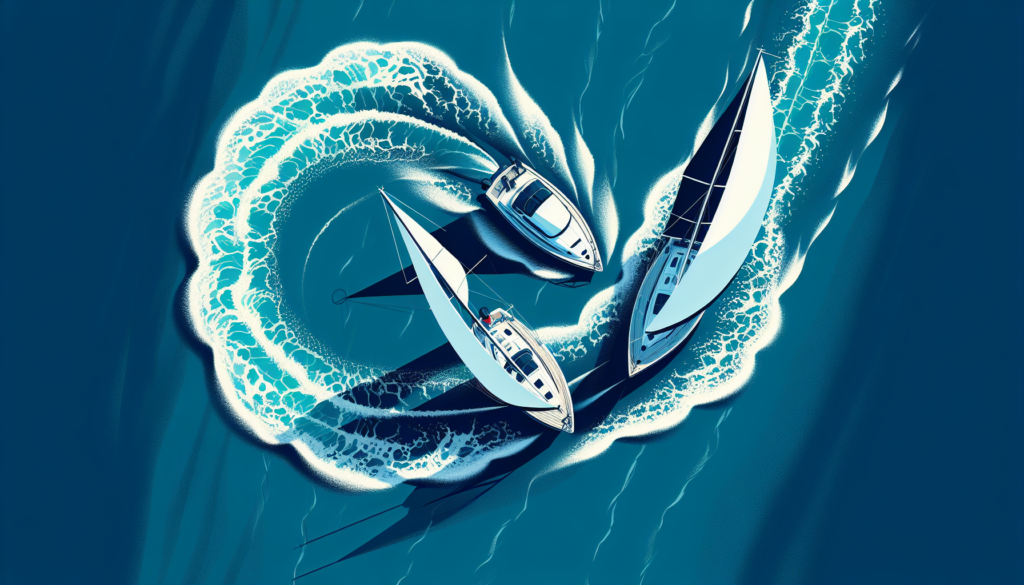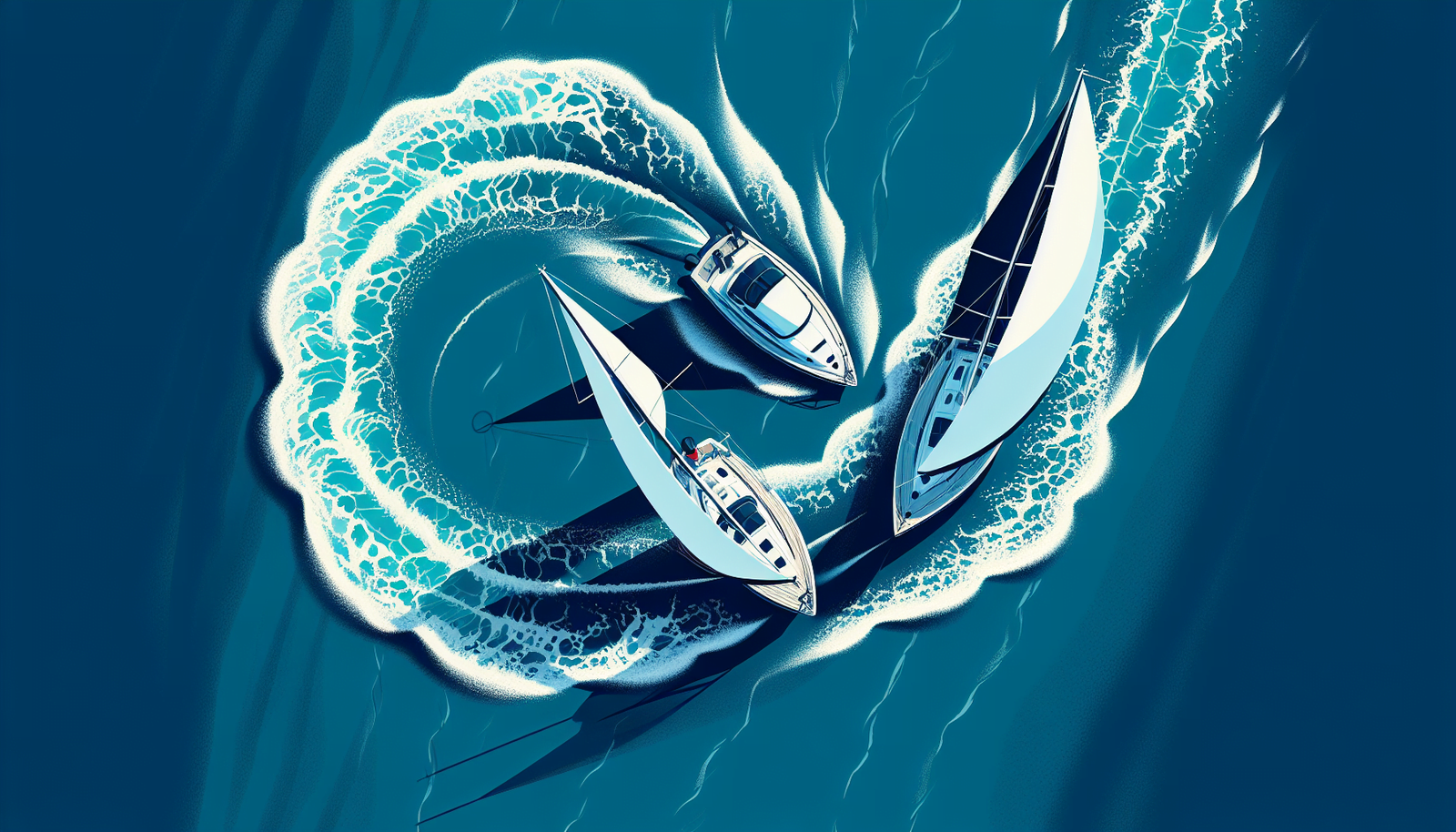Imagine the salty breeze tickling your face as you glide steadily on a boat over the glittering seas. Suddenly, another vessel appears from the horizon, heading in your direction. You might wonder who should now hold the reins of the sea. Your confusion is far from unusual – the dancing waters can, indeed, be a battlefield if unacquainted with the rules of seafaring. Your consciousness about Right of Way Rules on the water can be the difference between a pleasant trip or an unwelcome accident. This piece will untangle your doubts by shedding light on the often-overlooked but essential maritime laws, offering you a chance to navigate the seascape with confidence and poise.
Definition of Right Of Way Rules On The Water
Sailing across the vast expanses of water bodies has its own charm. However, even amidst this tranquillity, a strict adherence to the marine code of conduct is essential. One of the prime components of these waterborne disciplines is the ‘Right of Way’, an integral part of maritime navigation.
Meaning of Right of Way
The term ‘Right of Way’ in nautical context refers to the set of rules and principles that determine who has the right to forge ahead when two vessels come across each other in the water. Think of it as the traffic rules of the water world, where understanding who has the priority to move can eliminate the risk of collision and confusion.
Significance of understanding Right of Way Rules
Knowing the Right of Way rules is absolutely crucial, not only from a regulatory standpoint but also from a safety perspective. A clear comprehension of these rules ensures smooth movement of vessels, prevents accidents, and promotes a harmonious sailing environment.
Basic principles of Right of Way on Water
The basic tenets of the Right of Way revolve around responsibility, vigilance, and awareness. Adhering to these rules, a vessel is expected to keep a consistent course and speed. However, the vessel must be prepared to take suitable actions as per the situation and conduct navigation with timeliness and alertness.
General Rules of Navigation
To command the helm, it is not just about knowing where you are heading, but also understanding the dynamics of other vessels sharing the waterways with you.
Rule of good seamanship
Good seamanship involves the ability to predict threats and act proactively. This includes avoiding any actions that may result in a collision, maintaining appropriate distance from other vessels, and using correct signals to communicate intentions.
Responsibility between vessels
All vessels, irrespective of their size, have several responsibilities. From respecting the authority of another vessel in certain situations, to understanding the actions they must undertake in varying circumstances, a lot is expected from a vessel or steersman.
General duties of a lookout
Maintaining a proper lookout is a nautical obligation. This includes continuous visual and aural attention to detect any possible dangers. Whether it’s a dark nighttime voyage or in unfavorable weather conditions, a proper lookout is a lens that projects situational warnings.
Safe speed
Navigating at a safe speed is a must at all times. ‘Safe speed’ interpretation differs contextually, taking into account factors such as visibility, traffic and the vessel’s proximity to navigational hazards.

International Regulations for Preventing Collisions at Sea
Navigating through the vast expanse of the water involves understanding and complying with international regulations. The cornerstone of such regulations is the COLREGS.
Understanding the COLREGS
The COLREGS, short for the International Regulations for Preventing Collisions at Sea, is a set of rules that define how vessels should interact with one another to prevent collisions. They pull together a comprehensive protocol for navigating vessels under any circumstances.
Obligations under COLREGS
COLREGS form a contractual base that each vessel is expected to oblige by. They include rules such as the obligation to maintain a proper lookout, to proceed at a safe speed, to act in a manner that avoids collision, among several others.
Navigating by Sail vs Power
Navigating a vessel, whether by power or by sail, both have individual nuances.
Differences in navigating rules for Powerboats and Sailboats
Powerboats and sailboats operate on different propulsion systems and thus have different roles to play under the Right of Way rules. While a powerboat may be more maneuverable, a sailboat heavily depends on wind direction which often determines its course.
Establishing whether a vessel is under sail or under power
The misconception is that the nature of a vessel can be determined by its external attributes. However, establishing whether a vessel is under sail or power largely depends on their operation. Visual cues, such as the propulsion of sails on a sailboat, help in identifying the nature of the vessel.

Rules for Vessels in Sight of One Another
As vessels navigate the water, there is a set of rules to follow when they come in sight of each other.
Understanding Head-on situations
A head-on situation arises when two vessels are moving directly towards each other. Under such circumstances, both vessels should alter their course to starboard to avoid collision.
Actions to avoid collisions
In a potential collision site, immediate and ample action is necessary to avoid impact. It is essential to discern the action in good time, taking into account the maneuverability of the vessel.
Assumptions to not make when vessels are in sight of each other
Making assumptions during navigation can lead to conflict and confusion. All vessels are mandated to adhere to the same set of rules at all times, and there should be no presumptions of flexibility or exemptions unless explicitly stated.
Overtaking and Crossing Scenarios
Negotiating an overtaking or crossing scenario can be quite the challenge on the water.
Rules regarding overtaking on water
Overtaking refers to any situation where a vessel exceeds another from any direction other than head-on. Unlike road rules, the overtaking vessel does not have the right of way and must take all necessary action to avoid collisionю
What constitutes overtaking in maritime rules
Overtaking is interpreted as the approach of one vessel to another from a direction more than 22.5 degrees abaft her beam, i.e., so as to involve a possibility of collision.
Understanding crossing situations
Crossing situations occur when two power-driven vessels are on intersecting courses. In such situations, the vessel which has the other vessel on her starboard side has to yield way.
Special Rules for Narrow Channels and Bends
Narrow channels and bends often prove to be challenging areas for navigation.
Understanding rules for navigating in constricted areas
Narrow channels require all vessels to stay as near to the outer limit of the channel which lies on their starboard side. Adequate measures should be taken when taking bends or maneuvering through a constricted passage.
Precautions to take in narrow channels
Vessels should reduce speed in narrow channels to control the process of navigation and prevent the risk of collision. Not just with other vessels, but also with the channel shorelines.
Handling of vessel through bends and obstacles
Safeguarding of vessels through bends and obstacles requires apt responsiveness and foresight. The vessel should keep a good lookout, lower speed if required, and use sound signals when navigating in restricted visibility.
Rules for Vessels in Special Circumstances
Vessels in special circumstances exercise a different rulebook, putting safety first at all times.
Right of way for vessels not under command
Vessels which, due to exceptional circumstances, cannot be navigated have the right of way over all other vessels.
Rules for vessels restricted in their ability to maneuver
Work is an important facet of the seas; hence, vessels carrying out activities such as dredging, surveying, or replenishment have additional considerations under the rules. They should exhibit suitable signals and others must respect their restricted ability to move.
Rights and obligations of fishing vessels and vessels constrained by their draft
Fishing vessels with nets that restrict their ability to maneuver have rights under the rules, as do vessels constrained by their draft. Such vessels must indicate their status so that other vessels can navigate accordingly.
Lights and Shapes for Navigation Rules
When navigating seas, the signals made through lights and shapes act as the language of interaction.
Importance of using lights and shapes in marine navigation
Lights and shapes are fundamental to marine navigation. Displayed suitably, these signals provide crucial information about a vessel’s status to others in the vicinity. They are a medium through which vessels silently converse.
Various signals and their meanings
Each signal, whether through light or shape, carries a specific message. For instance, vessels at anchor exhibit lights that signal this fact. Fishing vessels have their own distinctive shapes and lights that indicate their nets’ presence.
Responsibility of displaying correct lights and shapes
It’s an essential duty of all vessels to exhibit the correct signals. They play a crucial role in preventing miscalculations and thereby potential accidents on the water.
Sound and Light Signals in Restricted Visibility
Restricted visibility germinates a unique challenge in navigation. In such circumstances, both sound and light signals act as navigational aids.
Understanding the use of Sound and light signals
Sound and light signals help overcome the constraints imposed by restricted visibility. They help communicate a vessel’s intent, making navigation smoother and safer.
Responsibility of vessels in restricted visibility
All vessels are obliged to make necessary sound and light signals in restricted visibility, taking timely actions based on these signals.
Interpretation of sound and light signals
Being able to interpret signals correctly ensures appropriate navigation response. Each sound, whether it’s one short blast or two, communicates different intentions, and it’s critical for safety to interpret these correctly.
Sailing is indeed a rewarding experience, and being mindful of these marine codes sustains the harmony on water. It’s not just about knowing where your vessel is heading, but all about understanding the choreography of the vessels around you, and navigating in sync.

